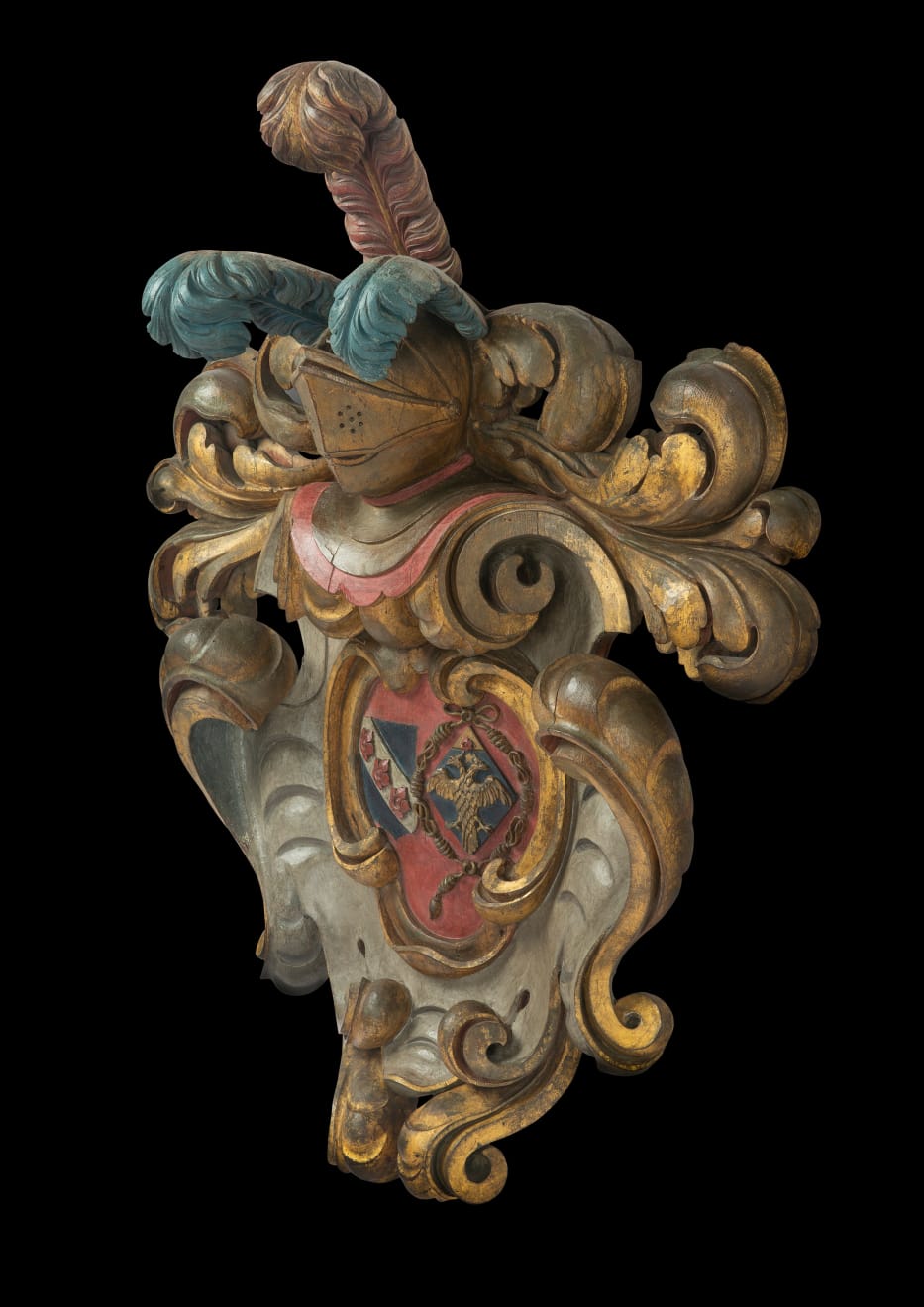17th Century Carved oak and polychrome decorated Achievement of Arms
FRANCE, CIRCA 1680
120 x 100 cm
47 ¼ x 39 ¼ in
47 ¼ x 39 ¼ in
6890
Original decoration with minor restoration. The carved, polychrome painted and gilt arms with a visor affronté, topped by three plumes azure, or and azure, above mantling and a scroll-edged cartouche....
Original decoration with minor restoration.
The carved, polychrome painted and gilt arms with a visor affronté, topped by three plumes azure, or and azure, above mantling and a scroll-edged cartouche.
The central shield-shaped red cartouche flanked by C scrolls bears two separate coats. The dexter shield is azure on a bend argent three roses gules. The sinister shield clearly being the arms of a lady which is indicated by being within a lozenge (diamond shape), as well as the cordeliere and comprising a gold eagle with two heads on a blue field, with a gold ‘chief’ (possibly a narrow chief or comble) which is charged with a rose (possibly an allusion to the dexter coat).
This achievement is a French bourgeoisie crest of two spouses.
The carved, polychrome painted and gilt arms with a visor affronté, topped by three plumes azure, or and azure, above mantling and a scroll-edged cartouche.
The central shield-shaped red cartouche flanked by C scrolls bears two separate coats. The dexter shield is azure on a bend argent three roses gules. The sinister shield clearly being the arms of a lady which is indicated by being within a lozenge (diamond shape), as well as the cordeliere and comprising a gold eagle with two heads on a blue field, with a gold ‘chief’ (possibly a narrow chief or comble) which is charged with a rose (possibly an allusion to the dexter coat).
This achievement is a French bourgeoisie crest of two spouses.




